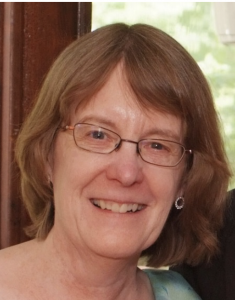Guest post by Susan Gerbi, George Eggleston Professor of Biochemistry and professor of biology at Brown University, and Virginia A. Zakian, Harry C. Wiess Professor in the Life Sciences in the Department of Molecular Biology, Princeton University.

Patricia J. Pukkila
September 28, 1948 – June 20, 2019
Dr. Patricia J. Pukkila passed away on June 20, 2019, shortly after having been diagnosed with advanced pancreatic cancer. Pat was a lifelong member of the Genetics Society of America. She served on the GENETICS Editorial Board from 1990–2008 and was the Founding Editor for the Genetics Education section of GENETICS (1999-2012). In 2005, Pat was elected as a Fellow of the American Association for the Advancement of Science for her work on regulation of meiosis and for her leadership in promoting undergraduate education and research.
Pat was an accomplished scientist, educator, and musician. After her undergraduate education at the University of Wisconsin – Madison, she joined Joe Gall’s lab at Yale for her Ph.D. research (1970-1975) where she studied the lampbrush chromosome loops that transcribe 5S ribosomal RNA in Notophthalmus (Triturus) viridescens. Her single author publication of this work reported the first RNA in situ hydridization [Pukkila PJ (1975) Chromosoma. 53: 71-89]. Subsequently, she was a postdoc with Robin Holliday at National Institute of Medical Research (Medical Research Council) in Mill Hill, London, England. Then she was a postdoc with Matthew Meselson at Harvard University in Cambridge, Massachusetts. In the Meselson lab, she discovered methyl-directed mismatch repair in Escherichia coli, a finding that was discussed by Paul Modrich as necessary background for his own work in his 2015 Nobel Lecture [Pukkila PJ, Peterson J, Herman G, Modrich P, Meselson M (1983) Genetics.104: 571-582]. After her postdoc positions, she joined the faculty of the Biology Department at the University of North Carolina at Chapel Hill (UNC) and rose through the ranks to Professor and Associate Dean. Pat retired in 2013 but retained her ties with UNC, serving as President of the Retired Faculty Council.
Pat was a geneticist par excellence. Long before the recent trend to do research with emerging model organisms, Pat pioneered the use of the basidiomycete fungus Coprinus cinereus (recently renamed Coprinopsis cinerea) as a model system for the genetic control of chromosome pairing and synapsis in meiosis because many features of the C. cinereus life cycle facilitate such studies [Pukkila PJ (2011) Curr Biol 21: R616-17]. Meiosis occurs synchronously in this mushroom, which is easily cultivated on defined medium. Certain features of the mating system greatly facilitate the recovery of recessive mutations that completely block meiosis and/or spore formation, which enabled Pat and others to undertake extensive genetic analyses of meiosis. The methods she developed for DNA-mediated transformation have been used both to disrupt genes as well as to complement induced mutations. Pat headed the C. cinereus genome project and produced a telomere-to-telomere sequence assembly of the 13 Mb genome into 13 chromosomes [Stajich JEet al (2010) Proc Natl Acad Sci 107: 11889-94]. This analysis, together with a high-resolution genetic map and improved sequence annotation, revealed sub-telomeric hot spots for meiotic recombination that coincide with regions where meiotic synapsis initiates.
In addition to her research accomplishments, Pat transformed undergraduate education at UNC. Inspired by the thrill of scientific discovery, she was passionate about linking research with inquiry-based learning. Pat was an Associate Dean and the founding Director of the Office of Undergraduate Research (OUR), which successfully promoted opportunities in independent research for undergraduates in all disciplines, not just in science. As a direct consequence of her work, a research experience will soon be a graduation requirement for all UNC undergraduates.
She was also a gifted and innovative classroom teacher. In 2007, Pat received the American Society for Cell Biology Bruce Alberts Award for Excellence in Science Education in recognition of her passion, creativity, and commitment, which brought inquiry-based education and undergraduate research to UNC and has served as a model nationwide. She also won two prestigious UNC awards for excellence in undergraduate teaching: the Tanner Award (1990) and a Bowman and Gordon Gray Associate Professorship (1993–1996).
Pat is survived by her husband of almost 45 years, Gordon Worley, M.D. (Professor Emeritus of Pediatrics at Duke University) and their son, Read Pukkila-Worley, M.D. (an infectious diseases physician-scientist and Assistant Professor at the University of Massachusetts Medical School) and his family. We have lost a talented researcher, educator, administrator, and friend who enriched the lives of many and made significant contributions in so many ways.































